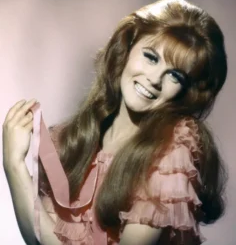
Joe “Jellybean” Bryant, the father of the late Basketball Hall of Famer Kobe Bryant, has died at the age of 69, La Salle University’s athletics department reported.
Citing La Salle men’s head basketball coach Fran Dunphy, The Philadelphia Inquirer wrote Joe had recently suffered a stoke. The exact cause of death hasn’t been confirmed yet.

La Salle University, where Joe played and coached, said in a statement that he “was a beloved member of the Explorer family and will be dearly missed.”
Just like his famous son, Joe was a renowned basketball player himself. Drafted by the Golden State Warriors as the 14th overall pick in the 1975 NBA draft, he played for the Philadelphia 76ers for four seasons, the then-San Diego Clippers for three seasons, and the Houston Rockets for one season. He also played in Europe.
The 76ers paid tribute to Joe, calling him “a local basketball icon, whose legacy on the court transcended his journey across Bartram High School, La Salle University, and his first four NBA seasons with the 76ers from 1975-79.”

Joe’s sudden passing comes four years after the tragic death of his son Kobe and his granddaughter Gianna, who were killed in a helicopter crash with seven other people.
Kobe’s widow, Vanessa Bryant, wrote on her Instagram story on Tuesday, “Sending our condolences upon hearing the news of my father-in-law’s passing.
“We hoped things would’ve been different. Although the times we spent together were few, he was always sweet and nice to be around. Kobe loved him very much.”
Former Kobe teammate Doug Young praised Joe as the ideal “role model.”

“Joe was our JV coach at Lower Merion and I could not have asked for a more positive mentor, teacher, and role model,” Young told ESPN. “It’s difficult to overstate how much he influenced me and my teammates. He made basketball fun and made us all want to be better; he believed in us. I’ll never forget his infectious smile, his bear hugs and the incredible bond he shared with Kobe. Growing up in Lower Merion, there was no family we loved and admired more than the Bryants, and that started with Joe.”
Arn Tellem, the vice chairman of the Pistons and formerly Kobe Bryant’s agent, expressed his sadness over the loss of Joe and joined the basketball community in mourning a true Philly hoops legend. “Our friendship opened the door for me to represent Kobe as he entered the NBA, a memory I’ll always cherish. Joe was a devoted husband, father and grandfather, whose warmth touched everyone he met.”
May he rest in peace.
The flight attendant approached me and requested, “Please remain seated after we land; the pilot would like to speak with you personally.”

I thought my big business trip to LA was going to be just another day until a mysterious request from the pilot left me questioning everything I knew about my past. The truth he shared would alter my future in ways I never imagined.
My flight to Los Angeles was supposed to be a smooth one, but what happened during that two-hour journey changed my life forever. But before I tell you about it, let me share why I had to reach LA that day.
So, I work as an architect at a well-known construction firm, and this is my dream job. Let me tell you, it wasn’t good luck that brought me here. It was my hard work and all those sleepless nights I spent in college upgrading my skills and learning new concepts.
Recently, my boss gave me an opportunity to present a big project to some of our top investors in Los Angeles.
It was a HUGE thing because it could lead to a long-awaited promotion, so I happily accepted the opportunity.
Honestly, I felt so grateful for it because it was also a chance to make my mom, Melissa, proud. She’s my best friend, and that’s mainly because she has raised me as a single parent. She told me my father passed away before I was born, but she never stopped me from chasing my dreams. Mom’s always been there to support me, and I love her for that.
So, when I told her about the meeting in LA, she hugged me and said, “Go get ’em, sweetie! I’ll be praying for you.”
The time flew by at the airport, and soon I found myself comfortably seated on the plane, ready to take off. The flight attendants were all so welcoming, and I lucked out with an empty seat next to me!
As the plane began to ascend, I couldn’t help but feel excited. I was well-prepared for my presentation, hoping the investors would like it.
A few minutes into the flight, a friendly-looking flight attendant named Bethany approached me with a tray of drinks.
“Can I get you something to sip on?” she asked with a smile.
“Just orange juice, please,” I replied, raising my hand to accept the glass. As I did, Bethany glanced down at the birthmark on my wrist.
“I’m sorry, could I have your passport, please?” she asked suddenly.
Well, that’s strange, I thought.
Confused but not wanting to argue, I handed it over. Bethany looked it over carefully before returning it with a nod.
“Just a standard protocol check. Thank you!”
Sounds cool.
A short while later, Bethany returned to my seat.
“Excuse me, will you be in a rush after we land?” she asked.
“Yeah, I’ve got a connecting flight to catch and I’m already running late,” I explained as I subconsciously clasped my hands together.
“Well, the pilot wants to speak with you after we land.”
“The pilot?” I asked. “Why? Can’t he just talk to me now?”
“I’m afraid not,” Bethany replied in a serious tone. “He wants to talk to you in person. I know you’re in a hurry, but trust me, you’ll want to hear this. You’ll regret it if you don’t.”
I sat there, utterly perplexed.
What on earth could the pilot possibly need to tell me? And why did it have to wait until after we landed? My big meeting was hanging in the balance, and I didn’t want to risk missing my connection. But Bethany’s insistence made me feel like this was something important.
As the plane touched down and the other passengers began filing out, I steeled myself and waited patiently for the pilot to approach.
When the cabin was finally empty, a tall man with graying hair entered, his eyes immediately locking onto mine.
At that point, I literally dropped my bag and jacket. My jaw just about hit the floor because I could’ve sworn I had seen this man before.
I instantly recognized him from old photos my mom had shown me. This was Steve, her childhood friend.
But the man didn’t look happy to see me.
In fact, tears were streaming down his face as he threw his arms around me in a tight embrace. I stood there, completely bewildered, as he sobbed into my shoulder.
“What’s going on?” I asked in a shaky voice. “What happened?”
He pulled away, gazing at me with red-rimmed eyes. Then, he gently took my hand and revealed a birthmark on his wrist. It was an exact match to the one on mine.
“Courtney,” he choked out, “I’m your father.”
“Wait, what?” I looked at him with eyes wide open. “My father? But Mom said…”



Leave a Reply